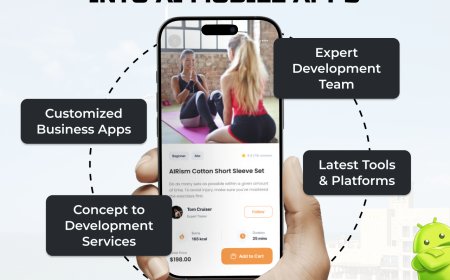How Smart Devices Are Influencing Web Design
Discover how smart devices like phones, watches, and voice assistants are changing the way websites are designed today.

Web design has changed a lot over the past few years. One of the biggest reasons for this change is the rise of smart devices.
Today, people dont just use computers to access the internet. They use smartphones, tablets, smartwatches, TVs, and even voice assistants like Alexa and Google Home.
As these devices become more popular, web designers must create websites that look and work well on all screens and platforms. Lets explore how smart devices are influencing modern web design.
What Are Smart Devices?
Smart devices are gadgets that connect to the internet and offer more than one function. Common examples include:
-
Smartphones
-
Smartwatches
-
Tablets
-
Smart TVs
-
Voice-activated assistants (like Alexa or Siri)
-
Smart glasses
-
Smart home hubs and appliances
These devices are now part of daily life. People use them to browse websites, shop online, watch videos, and access apps.
Why Smart Devices Matter in Web Design
When a website only works well on a laptop or desktop, its not enough anymore. Users expect websites to load fast, look good, and respond quickly on all types of smart devices.
This shift is forcing web designers to rethink layouts, buttons, images, and overall user experience.
Lets look at the key ways smart devices are influencing design.
1. Mobile-First Design
More than half of all website traffic comes from mobile phones. Because of this, many designers now use a mobile-first approach.
This means they start designing for the smallest screen first, then expand for bigger screens.
Mobile-first design ensures:
-
Fast loading on phones
-
Easy-to-read content
-
Simple navigation
-
Fewer distractions
It helps improve user experience for everyone, especially mobile users.
2. Responsive Layouts
With so many screen sizes, web design must be responsive. This means a website should automatically adjust to fit the users screen.
Responsive design allows a single website to look great on:
-
Phones
-
Tablets
-
Laptops
-
Large desktop monitors
-
Smart TVs
This is done using flexible grids, images, and CSS media queries.
3. Voice-Activated Interfaces
Many smart devices use voice commands. Voice assistants like Siri and Alexa are changing how users search for information.
Web designers now consider voice search optimization and simpler, more direct content.
Using natural language in headings, FAQs, and call-to-actions helps smart devices understand and display your site better.
? Build Smart Device-Ready Websites with Premium Logics
At Premium Logics, we create modern websites that perform beautifully on all smart devices.
Whether your audience visits from a phone, tablet, or smart TV, we make sure your site is fast, user-friendly, and secure.
Our responsive and mobile-first web design approach ensures your business stays ahead in the digital world.
Explore our work at: https://premiumlogics.com
4. Touch-Friendly Design
Smartphones and tablets are operated by touch. This changes how users interact with websites.
Designers now use:
-
Larger buttons
-
Simple menus
-
Swipe gestures
-
Minimal popups
Touch-friendly design improves accessibility and reduces frustration for users on mobile or tablet.
5. Wearable Devices and Micro-Content
Smartwatches and fitness bands have small screens. Web design for these devices focuses on micro-contentvery short messages, icons, and alerts.
Web apps now offer simple versions for wearables, such as:
-
Order updates
-
Reminders
-
Quick replies
-
Short news alerts
Designers must focus on speed, clarity, and function when working for these devices.
6. Faster Load Times for All Devices
Smart devices may have slower internet speeds or lower processing power. Thats why speed is now a top design priority.
Web designers use:
-
Compressed images
-
Clean code
-
Lazy loading
-
Content delivery networks (CDNs)
Faster websites work better on all devices and reduce bounce rates.
7. Accessibility and Smart Home Devices
Some smart devices are designed to help people with disabilities. Voice-controlled browsers, screen readers, and other assistive tools must work smoothly with websites.
This is why accessible design is more important than ever. It includes:
-
Clear fonts
-
Good color contrast
-
Keyboard navigation
-
ARIA labels for screen readers
An accessible website works well on smart devices used by everyone.
Final Thoughts
Smart devices are changing how we use the internetand how we design for it.
From mobile phones to smartwatches to voice assistants, users expect websites to work perfectly across all platforms. As a result, web designers must adapt by creating responsive, fast, and user-friendly experiences.
Whether you're a small business or a growing brand, having a smart-device-ready website is now essential. It's not just about good looks. It's about performance, access, and ease of use on every screen.
At Premium Logics, we help businesses build websites that meet the needs of todays connected users.
Lets make your website ready for every smart device.




































